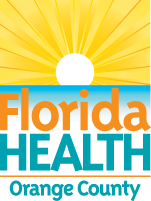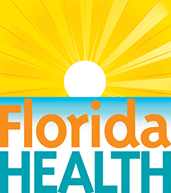Making an Emergency Supply Kit
September 05, 2017
An emergency supply kit for your home or an evacuation should include items from six basic areas: (1) water, (2) food, (3) first aid supplies and medications, (4) clothing and bedding, (5) tools and emergency supplies, and (6) important family documents. You will need a supply kit if you must stay at home. It is important to assemble your kit well in advance of an emergency. It is also valuable if you evacuate to a place other than a general public shelter or if you’re unsure of the shelter supplies. If possible, make arrangements to stay with a friend or relative who resides closest to your home and who will not have to evacuate. If a hotel or motel is your final intended destination during an evacuation, make reservations before you leave.
Tips for Making Your Kit
- Keep loose items in airtight plastic bags.
- Gather the kit’s items in easy-to-carry containers or duffle bags. Put kit within reach of your most regularly used exit.
- Check and update your kit and family needs at least once a year.
Tips for Water & Food Supplies
- A normally active person needs to drink at least two quarts of water daily. Heat and intense activity can double this amount. Children, nursing mothers and those with special needs may require more.
- Food preparation and sanitation require another two quarts (minimum) per person daily.
- Purchased bottled water that has been sealed is best for storage. It meets FDA guidelines for food, is not as vulnerable to temperature changes as unsealed water and has no shelf life. (Some bottles do have expiration dates, but this is mainly for inventory control.) If for any reason you must disinfect water, use unscented bleach in the ratio of 8 drops per gallon, about 1/8 teaspoon, and let the mixture sit 30 minutes before use.
- Choose compact, lightweight foods that do not require refrigeration, cooking or preparation and foods that use little or no water.
- Hand washing with soap and water is extremely important. However, in the event water for hand washing is unavailable, use alcohol-based sanitizer.
DOH recommends at least a three-day supply of food and water in your kit, including:
- One gallon of water per person per day
- Ready-to-eat canned foods, fruits and vegetables
- Staples (salt, sugar, pepper, spices, etc.)
- Powdered milk and canned juices
- High-energy snacks, non-perishables (protein or fruit bars, nuts, crackers, whole grains)
- Food for infants and individuals with special needs
- Comfort/stress foods
- Pedialyte (to restore hydration if needed)
- Mess kits or paper cups, plates and plastic utensils
- Non-electric can opener, cooking tools, utility knife
- Pet food and extra water for your pet
For tools and emergency supplies, DOH recommends:
- Cash or traveler’s checks, coins
- Map of the area for locating shelters, local maps
- Extra set of car keys and house keys
- Battery-operated radio and flashlight, extra batteries
- Cell phone with chargers
- Fire extinguisher
- Pliers or wrench to turn off household water and/or gas
- Compass, signal flare, whistle and tube tent
- Plastic sheeting, storage containers and bucket with tight lid
- garbage bags and plastic ties for sanitation
- Tape (duct, masking)
- Candles and Matches in a waterproof container
- Paper, pencil
- Needles, thread
- Medicine dropper
- Aluminum foil
- Toilet paper, moistened towelettes and towels
- Soap, liquid detergent, disinfectant and unscented household chlorine bleach
- Feminine supplies and personal hygiene items
- Infant supplies (diapers, bottles and pacifiers)
For clothing and bedding supplies, DOH recommends:
- At least one complete change of clothing and footwear per person
- Sturdy shoes, work boots, hats and gloves
- A sleeping bag or warm blanket for each person
- Rain gear
DOH recommends having first aid kits for your home and cars, including:
·A three-day supply of each person’s vital medications
- Prescription drugs in original packaging (bottles)
- Sterile adhesive bandages in assorted sizes
- 2-inch and 4-inch sterile gauze pads (4–6)
- 2-inch and 3-inch sterile roller bandages (3 rolls)
- Triangular bandages (3)
- Latex gloves (at least 2 pairs)
- Cleansing agent, soap and moistened towelettes
- Antiseptic and antibiotic ointment
- Petroleum jelly or other lubricant
- Assorted sizes of safety pins
- Scissors, tweezers, needle and thermometer
- Tongue depressors (2)
- Non-prescription drugs
- Aspirin or non-aspirin pain reliever
- Anti-diarrhea medication, antacid and laxative
- Sunscreen
- Mosquito repellent, with DEET when appropriate
- Extra prescription glasses, sunglasses and/or contact lenses
- Hearing aid and batteries
- Personal items required to perform basic daily functions
DOH recommends copies of the following important family documents are kept in a waterproof, portable container within kits:
- Insurance policies
- Contracts and deeds
- Stocks and bonds
- Social Security cards and passports
- Immunization records and prescriptions
- Bank account numbers
- Credit card account numbers and company names and telephone numbers
- Inventory of valuable household goods
- Family records (birth, marriage, death certificates) and wills
- Current photographs of family members
For further information on preparing for emergencies, please visit: www.floridahealth.gov for the Florida Emergency Preparedness Guide or www.FloridaDisaster.org.
Disaster Preparation for families with children
To assist you, the Florida Department of Health in Orange County (DOH-Orange) has provided a link to important information on Disaster Preparation for
families with children. Read more about Disaster Preparation for Families with Children
Diabetes Disaster Preparedness Patient Information:
As a person with diabetes, your daily routine involves schedules and planning. An emergency can seriously affect your health. It may be difficult to cope with a disaster when it occurs. You and your family should plan and prepare beforehand even if the event is a loss of electricity for a few hours.
The first 72 hours following a disaster are the most critical for families. This is the time when you are most likely to be alone. For this reason, it is essential for you and your family to have a disaster plan and kit which should provide for all your family’s basic needs during these first hours. Read More about Diabetes Disaster Prepredness
Guidelines for Prgnant Women During a Disaster
Disaster situations can be very stressful. The Florida Department of Health-In Orange County cares about you and your baby. Read the guidlines form detailed information.





Connect with DOH